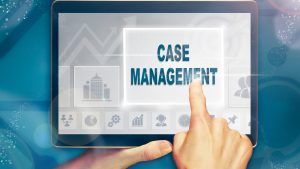Handling partnerships with donors is an important responsibility held by charity organisations. Organisations rely on the generosity of donors to carry out their operations and achieve their societal goals. Therefore maximum effort should be put into maintaining relations with donors to ensure that the charity organisation continuously receives funding. There is also a need to be transparent, especially in how the money is used. Today, various digital solutions help the non-profit sector to streamline its processes, including managing and holding a good rapport with donors. Two of them include customer relationship management and donor management systems. A simple google search, however, may confuse a person as these two terms have sometimes been regarded to be synonymous. While they hold similar features, they are also distinct from each other. Here is everything you need to know, including what they are, their differences and what type of solution is the best for implementation.
How Is a CRM Software Different From a Donor Management System?
As its name suggests, ‘Customer Relationship Management’ software focuses on managing customer and organisation relations. This solution can be implemented in any organisation, whether a charity or business corporation. In other words, a “vanilla” customer relations management is a general module which can be infused into any solution. On the other hand, a donor management system specialises in the tasks of donors. From reaching out to donors to collecting their funds, receiving grants, having an online transfer gateway, providing acknowledgement receipts, being transparent and sending updates, the donor management system is meant to ease all transactions with the donor. There are many types of donor management systems. At the most basic level, it could be an excel sheet that updates and manages details of donors manually. On a more advanced level, it is software which automates the entire process. Thus, the main difference between the two is the level of depth each solution specialises. Here are five other ways that make them different:
Which Is Costlier?
A traditional customer relationship management software is costlier than a donor management system. This is because a typical customer relationship management tool encompasses many tools that focus on sales, marketing, revenue, customer support, and many other features. In other words, a customer relationship management module is meant to streamline all operations in a typical corporation, primarily built for sales. While most customer relationship management software is customisable, letting organisations add in features that would be compatible or suitable for a non-profit, because of the powerful nature of a customer relationship management system, it would cost more for a charity organisation. In contrast, a charity, church or any other company that is a non-profit may find it financially sustainable to invest in a donor management system that exclusively focuses on its functions. Taken in another way, a donor management system can be seen as less powerful, although it is robust enough for charity purposes. Considering that such organisations are also under a tight budget, investing in a platform that holds features suitable exclusively for their objectives may be a better option.
Which Does a Better Job in Terms of Tracking Donations?
While the customer relationship management tool provides charity organisations with a record of their finances and automates receipts, a donor management system is a better option. This is because a customer relationship management module may only provide the amount received with the donor name and the total contribution it has made to the organisation’s overall finances. In contrast, in a good donor management system, a profile is made under their name when a donor agrees to sponsor the organisation or contribute to a specific project. In other words, the donor must create a profile in the system before they donate. From there onwards, any interaction, transaction and recipients generated are stored in the profile. This makes it extremely easy for someone in the team to assess which donors, for instance, have contributed to specific causes and streamline the process of tracking the finances received from them. It can also provide customised notification within the platform, reminding the organisation to reach out to the donor after a project is completed to let them know how their funds were utilised for the event.
Does Any of Them Guide or Advice You on Donations?
Both types of solutions provide valuable insights through their detailed reports. However, it again comes down to the kind of advice each system receives. Since customer relationship management software is business-oriented, it would consistently produce reports on how to increase profitability. Hence, it will point out mistakes, for example, that are not profit-oriented and would, therefore, recommend companies to take actions that would help them succeed in financial terms. In contrast, a donor management system understands the nature of a system exclusively made for charity. A common understanding regarding non-profits is that, as the term suggests, it is not profit-oriented. Instead, it measures its success based on how much of a contribution they have made to the overall cause the organisation stands for and how many people they were able to help. The difference between a system catered to a business goal and a humanitarian goal significantly affects the type of valuable insights drawn from the system.
Which Solution Optimises Overall Operations?
A customer relationship management system does a better job of optimising overall operations. Since this type of software can accommodate a wide range of features, it can optimise an organisation’s overall operations to a maximum. However, this does not mean a donor management system does not optimise operations. By automating a range of procedures, a donor management system can help charity organisations use their time and help their team focus on important tasks that require attention instead of wasting time on tedious manual processes. However, comparing the two solutions, a customer relationship management tool is more powerful. Given that it is more expensive, this is expected and reflected in its performance.
Do You Need Technical Expertise?
A donor management system is pretty straightforward. It is not that complicated and hence, does not require the team’s technical expertise. Any tech-savvy genius should be able to familiarise themselves with such a system easily. However, a customer relationship management software tool can be quite technical, requiring some training and time to get used to. Remember that both systems can integrate all departments into one central platform. This means everyone possibility should be able to use the software in some capacity. Hence, providing a training course for the platform itself would be a mandatory requirement, no matter how user-friendly it is. It then comes to the question of what level of training is required. For instance, because a donor management system is less complicated, the tech-savvy teammate can demonstrate it to the rest of the team. In contrast, an official technical specialist may be required to train the team to use customer relationship management software. Some vendors provide this service for free when purchasing their solutions.
So Which Solution Is Better?
Due to the individual drawbacks of each system, it is hard to choose between them. While a donor management system seems to be a better option for charities because it is catered to non-profits, large volunteer groups may find it hard to scale upwards. In other words, a donor management system is perfect if one wants only to record the number of donors and donations received. However, a donor management system is less powerful if the organisation holds an extensive database of volunteers and donors and has multiple religional bodies. It may not, in that instance, help streamline operations. The obvious choice then seems to be to choose customer relationship management which is more powerful. However, how feasible it is for a charity organisation will depend on the template the vendor provides for non-profits. One perfect solution that addresses all needs with the ability to customise includes a charity management system by a recognised vendor. A charity management system carries out all functions related to the organisation. This includes managing events, carrying out all donor-related operations, recording and monitoring the number of volunteers, documentation, tasks and more.
Find a Well-Rounded Solution Instead of Limiting Your Options
With the number of solutions available and the number of vendors in Singapore, you do not have to restrict yourself to two options. Instead, choose the best solution to make it a worthy financial investment. Unlock all the features of a customer relationships management and a donor management system by opting for a robust charity management system. Since it comes down to the vendor’s reputation and the quality of their solutions, choose wisely. Picking a customisable, scalable, affordable solution programmed by a reputed vendor such as Tigernix is sure to address all your charitable needs.






